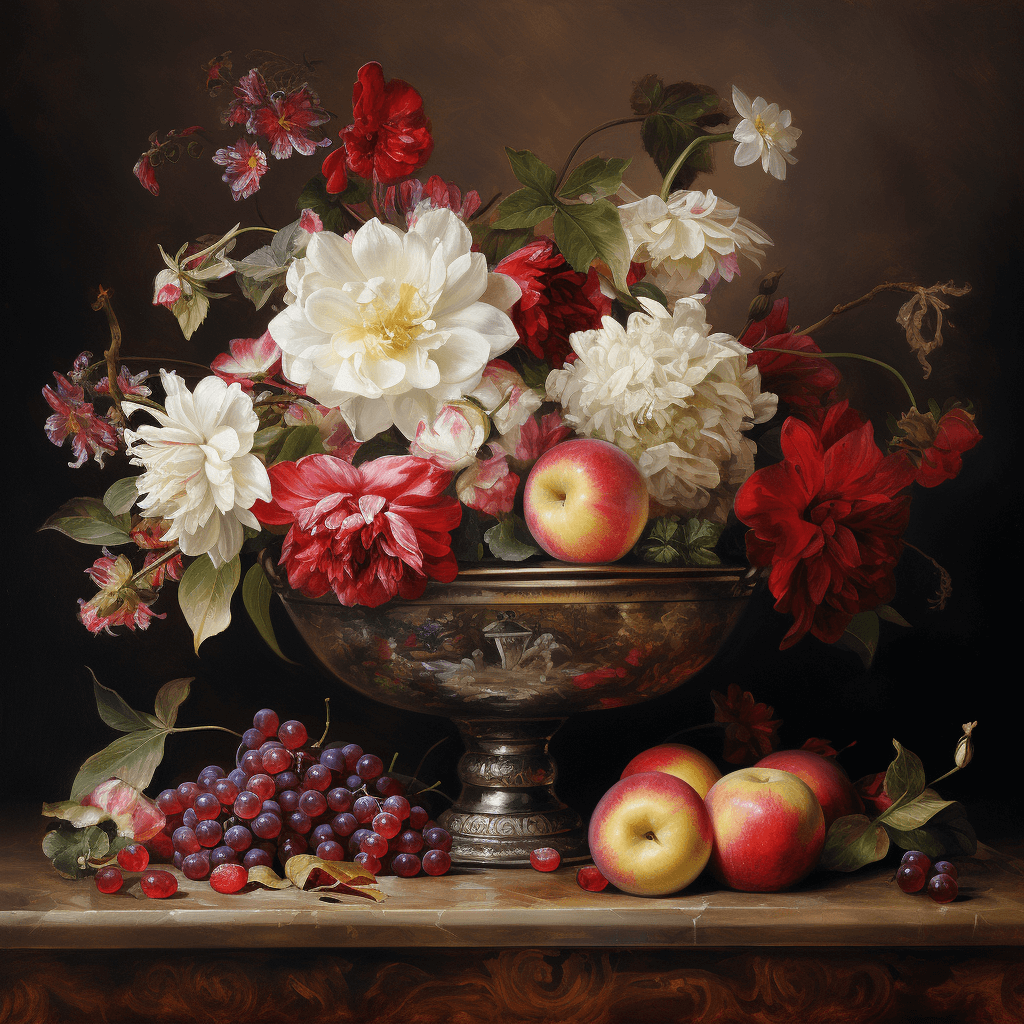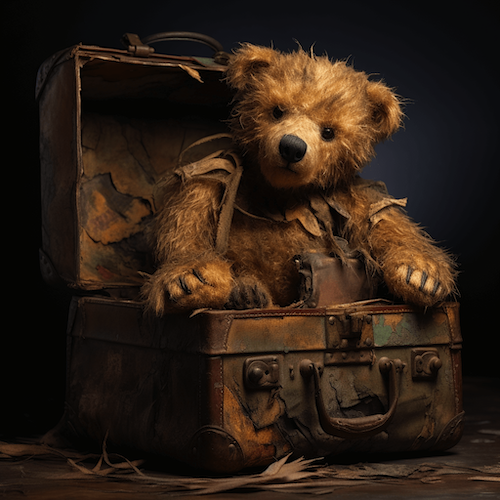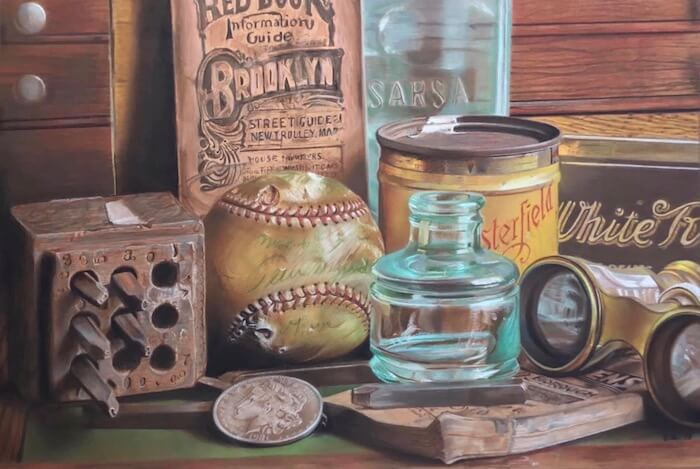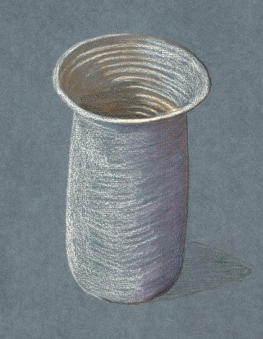- Home
- Still Life
- Still Life Objects to Draw
Using Still Life Objects to Capture Memories and Emotion
When you think of still life objects to draw, your mind might conjure images of fruit bowls, flowers, or maybe a classic vase. However, there is so much more to this art form than meets the eye.
Challenge the notion that a still life can only be a pretty arrangement of objects.
A still life drawing has the power to evoke just as much emotion as a cute baby animal portrait, and perhaps even more. This emotional impact comes from the personal significance of the objects you choose to draw.
Instead of grabbing fruit or flowers, imagine selecting items that hold deep personal meaning and memories for you. If your mind goes blank at first, take a moment to reflect on your life experiences.
Think about the objects in your life that have been constants through different chapters and milestones:
- What specific memories of people, places and events do they evoke?
- What complex emotions - joy, grief, nostalgia, etc. - do they stir within you?
- What items have been with you through major life events?
- How can you translate those nuanced feelings onto paper using skilled shading and colours?
Perhaps you need some inspiration from real examples to get your creative juices flowing?
 It’s time to move beyond traditional concepts and say goodbye to your grandma's traditional still life.
It’s time to move beyond traditional concepts and say goodbye to your grandma's traditional still life.The Emotional Impact of Still Life Objects
Let's reminisce.
Drawings of childhood toys may flood you with a longing for days of youthful innocence and wonder.
As you render the tattered fur and faded colours of your favourite teddy bear, you might find yourself flooded with the warm nostalgia of childhood.
 Include your childhood toys in your still life drawings
Include your childhood toys in your still life drawingsObjects of Loss: Not all personal objects evoke pleasurable emotions though. The beauty of picking meaningful still life subjects lies in their ability to capture the full depth of human experiences - including sadness.
For instance, drawing a broken holiday ornament from a past relationship could dredge up feelings of loss, anger, and the emotional trauma of going through a separation or divorce. By focusing on rendering the cracks, scratches and imperfections of this object in precise detail, you vividly relive the pain and heartbreak it represents.
Souvenirs and Mementos: Some still life objects may instantly transport you back to poignant moments and eras from your life's journey.
For example, a faded ticket stub from seeing The Rolling Stones live at Soldier Field in 1997 could make you hear the opening riffs of "Satisfaction". For many, the mere sight of that crinkled slip of paper might bring back powerful memories of that night’s atmosphere, music, and friendships.
Have you held on to maps, postcards and pamphlets specifically to help preserve meaningful vacation memories and experiences? Include them in your art.
 'A boy's dream' by Ed Kramer, where he drew these special items belonging to a friend, as a gift using pastel pencils
'A boy's dream' by Ed Kramer, where he drew these special items belonging to a friend, as a gift using pastel pencilsSeasonal: Even everyday household objects can become vessels for nostalgia when they represent annual milestones and traditions.
Imagine this summer still life scene:
- A pair of well-loved flip flops caked in sand beside a smooth pebble you picked up on the beach
- Faded polaroids of the lake cabin scattered around an empty glass pitcher that once fizzed with lemonade
- A dog-eared paperback novel you couldn't put down during those long lazy days
Is cooking out one of your favourite summer traditions? If so, including a humble picnic basket in your still life could capture the carefree spirit of countless warm evenings spent outdoors with family and friends.
Whether it's a Santa mug from your childhood, bunny ears worn every Easter, or even that plastic pumpkin basket from decades of trick-or-treating, seasonal objects can trigger an avalanche of memories and emotions about beloved annual traditions.
How Personal Items Reflect Your Identity
Beyond just evoking memories, the personal items you cherish reflect your interests, values, experiences and core identities. They serve as a physical representation of who you are.
When choosing still life objects to draw, the focus should not be on how old, rare or expensive they are. Instead, it should be about the stories they tell and the values they represent.
Cooking: If you are a passionate home chef, drawing your most-used cooking utensils can depict your love of bringing people together through comforting meals. A worn wooden spoon, a decades-old balance scale, or a gravy-stained cookbook could each symbolise your generous spirit and the simple joys of feeding loved ones.
Music: For music aficionados, a composition featuring vintage vinyl records, an antique flute, or a pair of high-end studio headphones could illustrate an appreciation for artistry and creative expression. These objects don't just represent a casual hobby, but an integral part of your identity and how you engage with the world.
Gardening: If you have a green thumb, sketching your gardening tools like pruning shears, a watering can, or a pot of vibrant blooms could capture your reverence for nature and life's simple pleasures. These objects serve as symbols of your patient, nurturing spirit and desire to cultivate beauty and growth.
Books: Books are not just inanimate still life objects, but portals to other worlds rich with characters, adventures and wisdom that have shaped our perspectives. Whether it's a tear-stained romance paperback, a tattered hardcover mystery, or a childhood book of fairy tales, each one contains traces of the profound emotions and wisdom you've absorbed from its pages.
Sport: For the avid sports fan or fitness enthusiast, a still life of muddy soccer cleats, a worn baseball mitt, or even an old weightlifting belt could symbolise your dedication, competitive spirit and commitment to an active lifestyle. These objects don't just depict casual hobbies, but the core priorities and values that motivate them.
Pets: Pets like dogs and cats aren't just animals, but cherished family members. So drawing their leash, collar, favourite squeaky toy or brush could capture the unique bond and countless happy memories you've made together over the years.
Choose objects that symbolise your passions, priorities and personality.
Making Your Artwork a Personal Statement
The objects that surround you in your daily lives are imbued with far more meaning than meets the eye. These possessions have stories to tell, memories to trigger, and emotions to evoke.
Isn't that what great art is all about? Creating something not just technically impressive, but meaningful and full of emotional resonance?
This has been a crash course on how to infuse personality and significance when picking still life objects to draw. Instead of random fruit bowls or generic vases, it's time to make your artwork a true reflection of your experiences, emotions, values and identity.
When drawing objects, it's not just about getting the shading and perspective right. The real goal is to capture the essence and spirit of those objects.
To do this, focus on details that show their history and character. Exaggerate any wear and tear they've gone through. Use colors and lighting to create a nostalgic, sentimental mood. These techniques will bring the objects to life and give them a sense of personality beyond just realistic rendering.
By doing this, you create an opportunity for viewers to connect with your artwork on a deeper, more profound level.
So feel free to break the rules, experiment with unusual objects, and most importantly, have fun! After all, art is all about unfettered self-expression and creativity.
Happy drawing! May your artwork tell rich stories for years to come.


